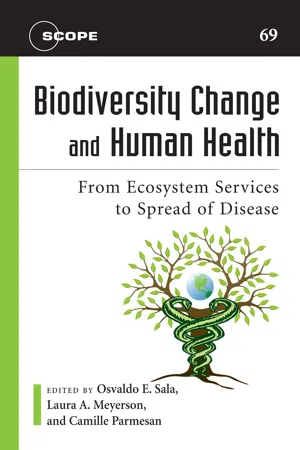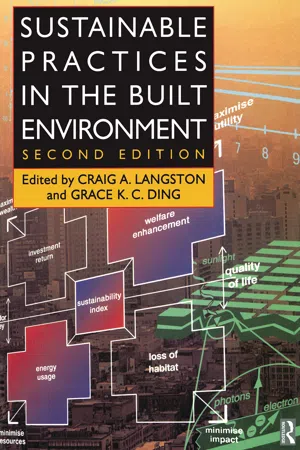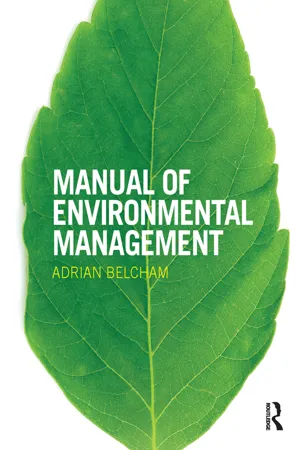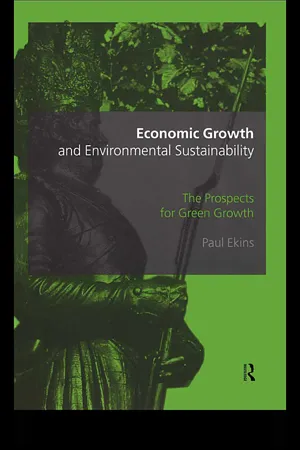Environmental Quality
Environmental quality refers to the overall condition of the environment, including air, water, soil, and ecosystems. It encompasses factors such as pollution levels, biodiversity, and the availability of natural resources. Assessing environmental quality involves evaluating the impact of human activities on the environment and implementing measures to maintain or improve its health and sustainability.
4 Key excerpts on "Environmental Quality"
- eBook - ePub
Biodiversity Change and Human Health
From Ecosystem Services to Spread of Disease
- Osvaldo E. Sala, Laura A. Meyerson, Camille Parmesan(Authors)
- 2012(Publication Date)
- Island Press(Publisher)
...The major findings included: Communities with higher Environmental Quality had more positive environmental values and a higher quality of life, while lower-environmental-quality communities revealed less environmental interest and a lower quality of life. The relationship between Environmental Quality, values toward nature, and socioeconomic conditions occurred in both nonurban and urban communities. Particular environmental factors, mainly diversity of native tree species, were strongly related to and an excellent predictor of human socioeconomic conditions, while certain social factors, mainly affinity for the natural environment, were powerfully related to and predictive of environmental health and functioning. The relationship between environmental and social variables occurred independent of income and education. The connection between natural and human factors was highly mediated by the intervening influence of salient landscape and land use features from a human perspective. The Role of Nature in Childhood Maturation and Development The basic contention of this chapter is that the human affinity for nature is biologically encoded, revealed in a range of basic values toward nature, and related to human physical and mental well-being. It stands to reason that even for a human species capable of lifelong learning, the most important period for the development of inherent tendencies is childhood. Some research supports this contention of contact with natural diversity as an important aspect of childhood maturation and development, although the data are sparse...
- eBook - ePub
- Craig Langston, Craig Langston(Authors)
- 2008(Publication Date)
- Routledge(Publisher)
...Part 1 Environmental Quality The environment and the economy can no longer be treated as independent and the subject of separate policy direction. Rather, the environment supports economic growth and rising living standards, providing vital social amenity that itself encourages human productivity and creativity. Economic well-being supports initiatives that can protect, conserve and improve Environmental Quality, fund research and assist in new discoveries or better understanding of natural phenomena. This balance between environmental conservation, which aims to protect natural resources, and economic progress, which aims to develop human infrastructure, is what is known as sustainable development. Too much emphasis on the environmental side will limit the ability to deliver improvements in living standards, particularly for the developing world, while too much emphasis on the economic side will lead to depletion of vital natural resources that cannot be readily recreated. Therefore sustainable development is one of the most important issues facing the quality of human habitation of the planet in the future, and one which must be addressed now if an effective balance is to be struck. It involves proper valuation of environmental goods and services, taking a long-term view of development decisions, and seeking to provide equity both within the current generation (rich versus poor) and across generations (present versus future). The construction industry is a major player in arriving at an effective balance, as most new projects involve some form of resource consumption and site modification that, as a general rule, diminishes environmental wealth and increases capital wealth. So projects which minimize impact on the environment while still providing necessary economic and social advantage should be favoured. Such an approach must bring together the two sides of the equation during the decision-making process...
- eBook - ePub
- Adrian Belcham(Author)
- 2014(Publication Date)
- Routledge(Publisher)
...resources Population growth Energy Land contamination Availability of productive land Biodiversity and ecological stability Chemicals exposure Waste Human community issues Nuisance Infrastructure/amenity impacts Cultural heritage impacts THE PLACE OF HUMAN BEINGS IN THE ‘ENVIRONMENT’ Sustainability and sustainable development Ecosystem products and services The international commitment to sustainable development The Earth Summit, 1992 The Earth Summit II, 1997 Rio+10, 2002 Rio+20, 2012 Sustainable development: an economic, social and environmental goal Relative sustainability Absolute sustainability FURTHER RESOURCES I ENVIRONMENTAL PROCESSES AND PRINCIPLES Environmental issues are intrinsically important to everyone. Even talking about ‘the environment’ as if it were something separate from us makes no sense, in fact. With every breath, movement, meal and action, we interact with other elements of what we refer to as the environment. Whether considering each of us as individuals, business organisations, industries or public bodies, we are all reliant upon the environment as the basis of our being. In the sixth century BCE, the classic Chinese philosophical text, the Tao Te Ching, captured this truth in a typically eloquent manner that can only be more relevant today than it was then: Many people with influence and wealth treat the earth as something to be owned. To be used and abused to suit their own ends. But the earth is a living being, a great spiritual source. To disregard this source is to call forth catastrophe, since all creatures great and small are an inherent and interdependent part of this very being. (Inspired by Verse 29, We are the World, trans. R. A...
- eBook - ePub
Economic Growth and Environmental Sustainability
The Prospects for Green Growth
- Paul Ekins(Author)
- 2002(Publication Date)
- Routledge(Publisher)
...4: The concept of environmental sustainability 4.1 SUSTAINABILITY: GENERAL DEFINITIONS AND DETERMINANTS The basic meaning of sustainability is the capacity for continuance more or less indefinitely into the future. The past twenty years have seen a substantial accumulation of evidence that, in aggregate, current human ways of life do not possess that capacity, either because they are destroying the environmental conditions necessary for their continuance, or because their environmental effects will cause unacceptable social disruption and damage to human health. The environmental effects in question, as outlined in Chapter 1, include climate change, ozone depletion, acidification, toxic pollution, the depletion of renewable resources (e.g. forests, soils, fisheries, water) and of non-renewable resources (e.g. fossil fuels) and the extinction of species. A way of life is a complex bundle of values, objectives, institutions and activities, with ethical, environmental, economic and social dimensions. While current concern about unsustainability largely has an ecological basis, it is clear that human situations or ways of life can be unsustainable for social, economic and ethical reasons as well...



